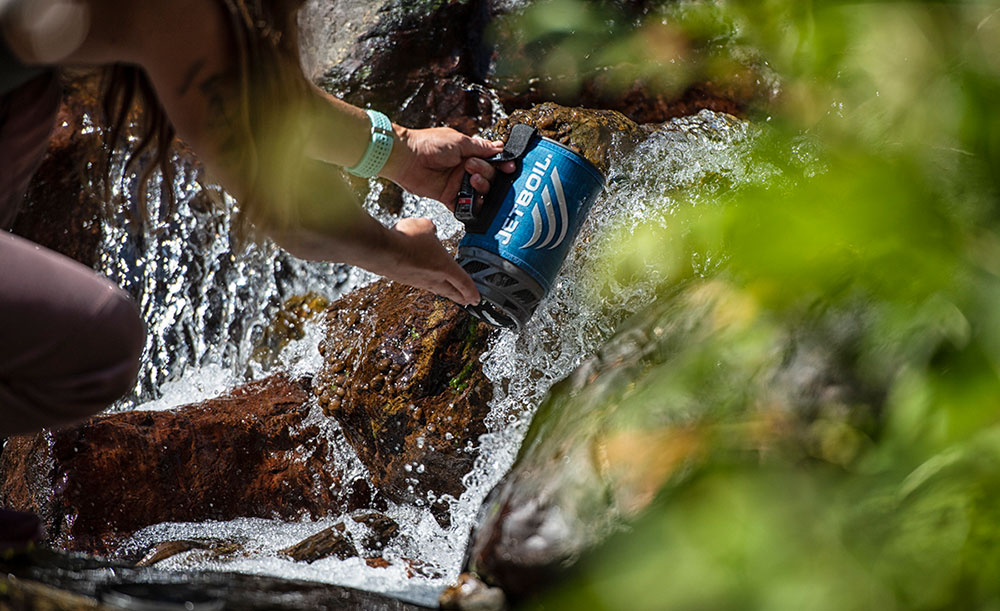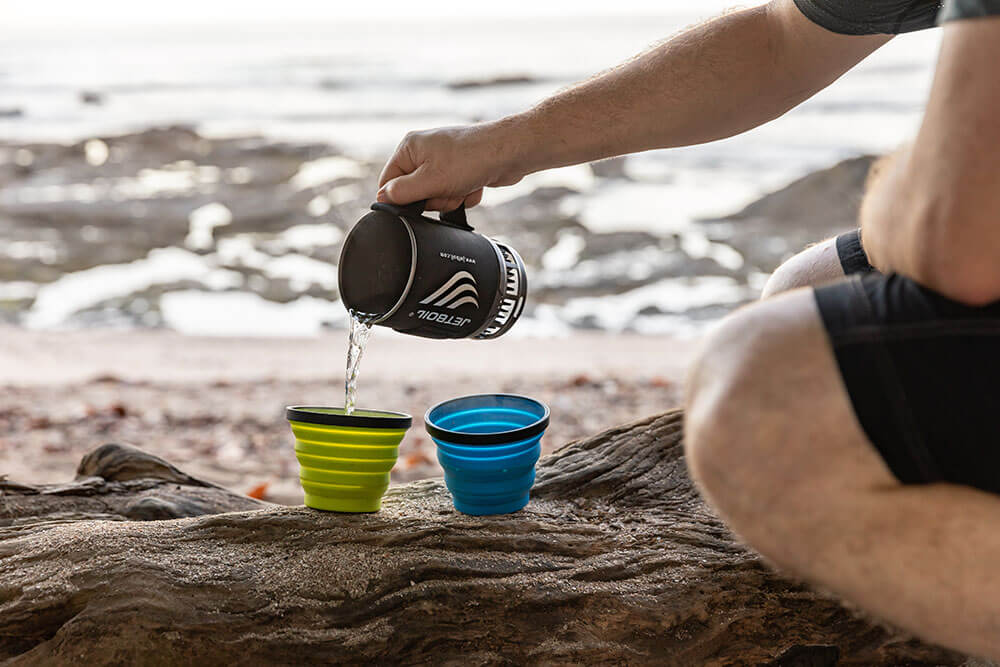How to Purify Water on the Trail

On or off the trail, staying hydrated is one of the single most important things you can do for your body. By the time you actually feel thirsty, you’re usually already dehydrated.
Of course, when you’re in the great outdoors, you don’t have many guarantees about the quality of the water you’re drinking. Even in the backcountry, water can have contaminants. Bacteria, viruses, and protozoa can cut your trip short if you’re not careful. You may also have concerns about human-made contaminants like pesticides and herbicides.
The good news is that you have several water purification methods available to you. It’s recommended that backpackers carry two different options with them for water purification. It’s important to have a backup in case something gets lost, or misplaced, or doesn’t work like you planned. Hydration is crucial, and doubling down on it is a smart, safe bet.
Boiling

Boiling is simple, safe, and easy to do. It kills most micro-organisms in the water, including both bacteria and viruses. You want to boil the water for a full minute, or three minutes at higher elevations (since water boils at lower temperatures in thinner air). Jetboil stoves are great for water purification, because you start boiling faster, and use less fuel while you’re doing it. This can be immensely helpful. After all, you don’t want to drink boiling water on a hot day. Boiling quickly (the Jetboil Flash starts boiling in just 100 seconds, for instance) means that you can let the water cool and start drinking sooner. The downsides to boiling are that it doesn’t remove sediment or heavy metals.
Water purification tablets and crystals
Boiling water only takes a few minutes, but if you weren’t planning on stopping even that long, there are other water purification methods available to you. Some people use chlorine or iodine for water purification. This will usually be a tablet, or crystals. Tablets are pretty inexpensive. They also work quickly, and take minimal effort. However, there are limitations. They won’t remove sediment, and it may take longer to work if sediment is present. The tablets only last six months after opening. The tablets don’t work on certain protozoa. And some people may need to be careful with iodine. You shouldn’t use iodine if you have thyroid issues, or an iodine allergy. You also should be very careful using iodine if you’re pregnant or have certain autoimmune issues.
Water filters
Water filters remove most biological hazards from drinking water. Most filters are attached to a drinking container. Pour or pump the water through the filter, and you’re good to go. Water filters catch many micro-organisms, including protozoa and bacteria. Some filters may include iodine to kill viruses, as well. Since not all filters are equal, be sure to confirm what a filter will or won’t do before purchasing one. Filters usually don’t screen out chemicals or heavy metals, which may be an issue if you’re backpacking in or near urban areas. Another thing to consider is that pump filters can get exhausting in a hurry, compared to other methods like tablets or boiling, depending on how much water you need.
Water purifiers

Water purifiers are related to filters, but heavier-duty. They generally remove all biological hazards, including viruses. Portable purifiers usually rely on carbon and/or iodine to remove impurities from the water. There are also heavier-duty purifiers that can remove all contaminants, including heavy metals and chemicals. Many of those purifiers are larger and heavier, and made more for base camp use.
UV purification
Some people use UV light treatment, using either a light pen or a special water bottle. This will kill bacteria and viruses, but it takes longer if there’s sediment in the water. That means you may have to filter the water beforehand. Still, a UV pen is a popular option for quick purification.
Other people use the sun to kill bacteria and parasites. This is better than drinking untreated water, but it’s a far cry from using a UV light pen, and for the sake of safety you’ll still need to filter, boil, or treat the water after.
What is the best way to purify water?
In the end, you have to decide where your sweet spot lies between thoroughness, portability, and convenience. Naturally, we prefer boiling water. It’s reliable, it’s something nearly anyone can do, and it will kill bacteria and viruses, making most water safe to drink. Plus, it has the added benefit of providing hot water for your morning cup of joe. You don’t have to use a Jetboil stove of course, but Jetboil offers plenty for those in the backcountry hoping to make sure their water is safe. Jetboil stoves boil faster, and use less fuel. And whether you’re going for affordability, speed, or volume, we have something for everyone.
Whatever method you choose, be sure that you take care of yourself, and stay hydrated with plenty of water that’s safe to drink.